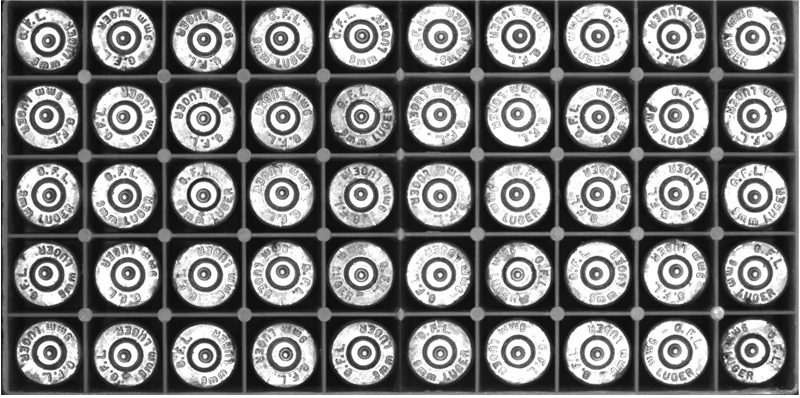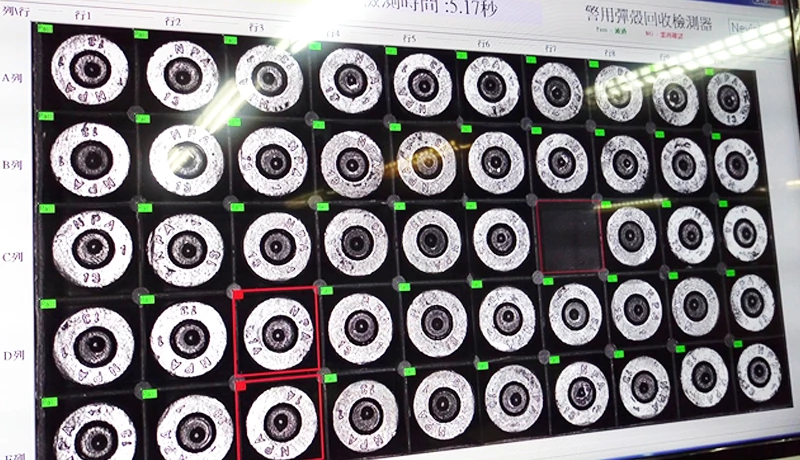Deep-Learning-Based OCR: Casing Inspection Saves Labor and Reduces Errors
Published on November 22, 2021 by TIS Marketing.
Headstamps are ammunition markings which serve as a classification system to account for the use, safe transportation, storage and quality control of ammunition. Police departments register all movements of ammunition into and out of their armories using ammunition control databases. These inspection and entry tasks are performed by officers themselves and cost police departments hundreds of hours every year. Taiwan's National Police Agency (NPA) cooperated with The Imaging Source reseller, Nevis Technology, to create a machine vision system with deep-learning-based optical character recognition (OCR) to inspect and catalog the ammunition. The project engineers selected The Imaging Source's DMK 33GP031 GigE monochrome industrial cameras to be used in conjunction with the system software which was developed by Nevis Technology specifically for the application. The new inspection system has allowed the NPA to fully automate the cataloging process, saving labor and reducing errors.

Monochrome Industrial Cameras Deliver Contrast-rich Images for OCR
The NPA had been looking for ways to automate the inspection of new and used ammunition for years and this was the first time the NPA had worked with a vision-based inspection system of any kind. Finding a reliable and highly accurate system seemed to pose the biggest challenge.
Nevis Technology devised a system whereupon two of The Imaging Source's monochrome cameras capture images of ammunition trays from differing angles. Ideal for machine vision tasks like OCR, monochrome cameras offer improved image contrast and resolution delivering sharp and contrast-rich images which ensure robust character localization, segmentation and extraction.
The software algorithm compares the extracted data with the pre-trained dataset. Any empty cells or casings not meeting the set standard (NOK) are indicated in red (see image below). The system fully inspects one tray of ammunition (typically 50 rounds per tray) every 5 seconds, satisfying the NPA's project requirements. Nevis reports, "By using the machine vision system to automatically identify, report, and pick out the bullets with different specifications, the police units have successfully reduced the manpower by about 60% and saved up to NT$2 million per year."

